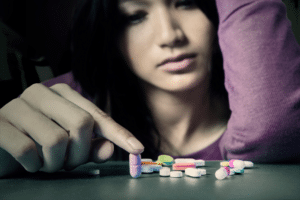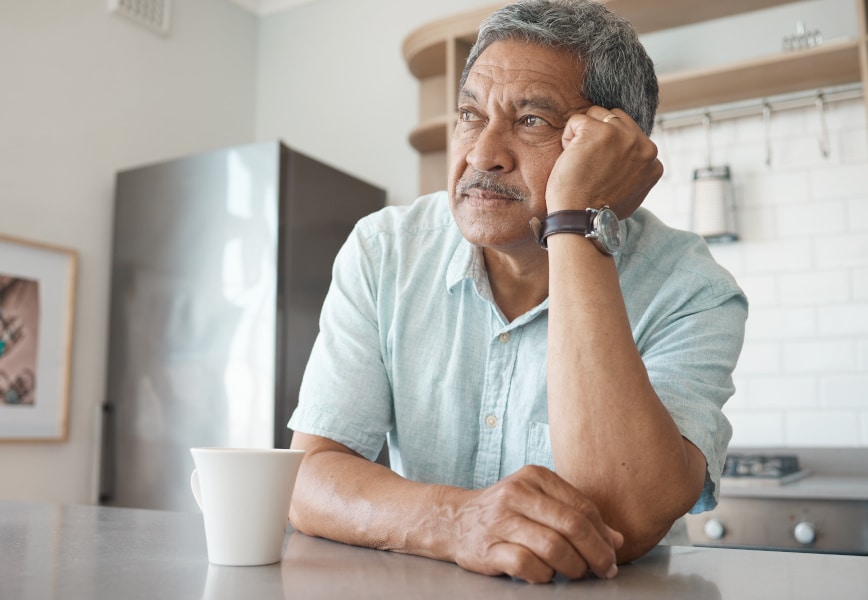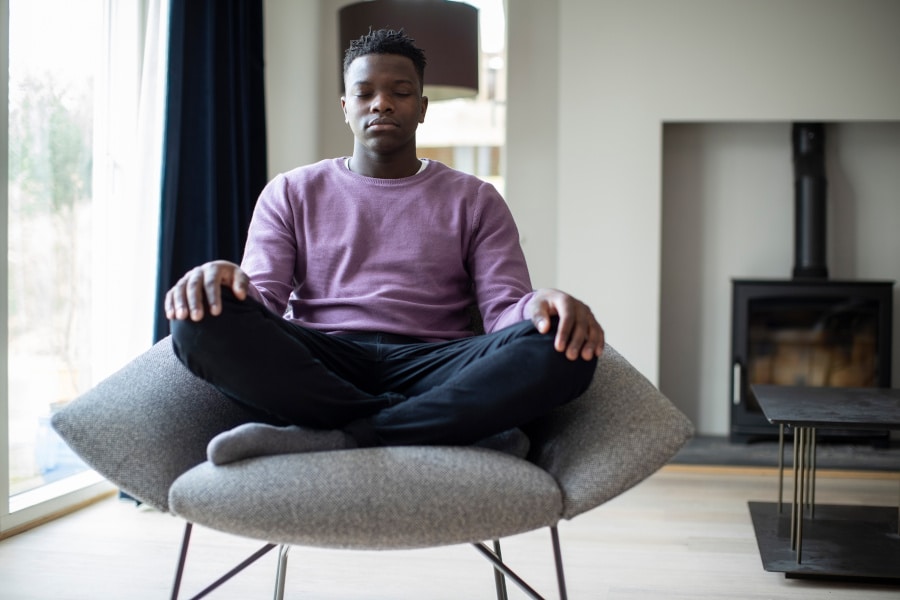 Prescription drug abuse is a rising problem, particularly for teens and young adults. It’s a common misconception that prescription drugs aren’t as dangerous as street drugs because they are prescribed by a doctor, but any time narcotics or strong medications are not taken exactly as prescribed, they can become dangerous or even deadly.
Prescription drug abuse is a rising problem, particularly for teens and young adults. It’s a common misconception that prescription drugs aren’t as dangerous as street drugs because they are prescribed by a doctor, but any time narcotics or strong medications are not taken exactly as prescribed, they can become dangerous or even deadly.
When a doctor prescribes medications such as psychiatric drugs or painkillers, the patient is monitored closely for signs of addiction or other problems. If these substances are taken by anyone other than the patient, or if they are not taken exactly as prescribed, there can be unexpected and unintended reactions or consequences.
Recreational Use of Prescription Drugs
People sometimes use drugs that are not prescribed for them in a recreational way. For example, tranquilizing drugs may be used for their relaxing effect, while stimulants may be taken for the experience of being high. Often these drugs can be obtained without much difficulty.
For More Information About Our Dual Diagnosis Treatment Programs
Call Us At: (310) 455-5258
High school and college students frequently begin abusing prescription stimulant drugs that are meant to treat attention deficit hyperactivity disorder. Besides being able to experience a drug-induced high, students often believe these medications will improve academic performance.
Peer pressure can lead young people to take prescription medications recreationally. Pills are sometimes taken because people are curious to see what effect they might have. This can become especially dangerous when medications are mixed or when high doses are taken out of curiosity or in an attempt to intensify the feeling of being high.
How Prescription Medications Are Obtained
Teenagers may experiment with drugs they find in their parents’ medicine cabinet. Prescription drugs may be purchased from a friend or relative, and they are sometimes obtained illegally and sold on the street.
Some people misuse their own prescriptions. When they find they are not feeling better on the prescribed dose, they may try to take more than prescribed, or they may obtain prescriptions from more than one doctor when they realize that a higher dose is required to get the desired effect.
Xanax and Other Psychiatric Medications
Central nervous system depressants that are prescribed for sleep disorders or to treat anxiety are commonly abused. These include benzodiazepines such as Xanax, Ativan or Valium.
People may take these medications for their relaxing effect, but in high doses they can lead to slowed pulse and breathing as well as dizziness, disorientation, and problems with coordination or judgment. In some people, high doses of these meds can have the opposite of the effect intended, leading to aggression, irritability, and agitation.
Oxycodone and Other Painkillers
Opioids are prescribed to reduce the intensity of pain-signal perception. In addition to relieving pain, medications in this category such as Percocet, OxyContin, Vicodin, and morphine stimulate the reward center of the brain which can give the user a feeling of euphoria and increase the risk of addiction.
When opioids are misused, they can cause drowsiness, mental depression and confusion. Those who actively abuse these substances by snorting or injecting them greatly increase their risk of overdosing.
Those who are living with chronic pain often don’t realize they are taking a substance with highly addictive qualities. They have a legitimate medical reason for taking these substances and don’t realize that over time they may be developing an addiction.
The Path to Prescription Drug Addiction
Prescription drug use and misuse can turn into dependence and addiction. The person becomes physically or psychologically dependent on the substance. Their tolerance grows, which means it takes higher and higher amounts of the drug to enjoy the same effect. They become compelled to keep taking the drug at any cost. Those who are addicted will continue to abuse substances in spite of negative consequences such as job loss, destroyed relationships or even health problems.
Initially, the use of these drugs is voluntary, but as time passes and drug abuse continues, changes in the brain can impact a person’s ability to make intelligent decisions. At this point, it can be difficult or impossible to quit abusing prescription drugs without professional help.
Breaking the Cycle
For the cycle to be broken, the person who has become dependent on a substance will need to acknowledge that a change has to be made. Treatment will depend on what substance or combination of substances have been habitually abused. It may include detoxification, counseling and possibly medications.
Dependence on painkillers can be reduced by learning new ways of dealing with pain. Other ways to deal with chronic pain include using deep breathing techniques, meditation, yoga or exercise. A support group of others living with chronic pain can help a person to feel less alone, and they may benefit from the suggestions of other people in similar circumstances.
Behavioral treatments can teach new patterns of thinking, help a person learn different ways of coping with uncomfortable emotions and also help them learn how to deal with cravings. Treatment for prescription drug abuse may also include individual, family or group counseling. The good news is that it is possible to recover from drug dependence with help.
If you or a loved one are struggling with addiction to prescription drugs, please call us at (310) 455-5258 or submit the form below to learn more about our treatment programs.
[free-assessment-form]
When a doctor prescribes medications such as psychiatric drugs or painkillers, the patient is monitored closely for signs of addiction or other problems. If these substances are taken by anyone other than the patient, or if they are not taken exactly as prescribed, there can be unexpected and unintended reactions or consequences.
Recreational Use of Prescription Drugs
People sometimes use drugs that are not prescribed for them in a recreational way. For example, tranquilizing drugs may be used for their relaxing effect, while stimulants may be taken for the experience of being high. Often these drugs can be obtained without much difficulty.
For More Information About Our Dual Diagnosis Treatment Programs
Call Us At: (310) 455-5258
High school and college students frequently begin abusing prescription stimulant drugs that are meant to treat attention deficit hyperactivity disorder. Besides being able to experience a drug-induced high, students often believe these medications will improve academic performance.
Peer pressure can lead young people to take prescription medications recreationally. Pills are sometimes taken because people are curious to see what effect they might have. This can become especially dangerous when medications are mixed or when high doses are taken out of curiosity or in an attempt to intensify the feeling of being high.
How Prescription Medications Are Obtained
Teenagers may experiment with drugs they find in their parents’ medicine cabinet. Prescription drugs may be purchased from a friend or relative, and they are sometimes obtained illegally and sold on the street.
Some people misuse their own prescriptions. When they find they are not feeling better on the prescribed dose, they may try to take more than prescribed, or they may obtain prescriptions from more than one doctor when they realize that a higher dose is required to get the desired effect.
Xanax and Other Psychiatric Medications
Central nervous system depressants that are prescribed for sleep disorders or to treat anxiety are commonly abused. These include benzodiazepines such as Xanax, Ativan or Valium.
People may take these medications for their relaxing effect, but in high doses they can lead to slowed pulse and breathing as well as dizziness, disorientation, and problems with coordination or judgment. In some people, high doses of these meds can have the opposite of the effect intended, leading to aggression, irritability, and agitation.
Oxycodone and Other Painkillers
Opioids are prescribed to reduce the intensity of pain-signal perception. In addition to relieving pain, medications in this category such as Percocet, OxyContin, Vicodin, and morphine stimulate the reward center of the brain which can give the user a feeling of euphoria and increase the risk of addiction.
When opioids are misused, they can cause drowsiness, mental depression and confusion. Those who actively abuse these substances by snorting or injecting them greatly increase their risk of overdosing.
Those who are living with chronic pain often don’t realize they are taking a substance with highly addictive qualities. They have a legitimate medical reason for taking these substances and don’t realize that over time they may be developing an addiction.
The Path to Prescription Drug Addiction
Prescription drug use and misuse can turn into dependence and addiction. The person becomes physically or psychologically dependent on the substance. Their tolerance grows, which means it takes higher and higher amounts of the drug to enjoy the same effect. They become compelled to keep taking the drug at any cost. Those who are addicted will continue to abuse substances in spite of negative consequences such as job loss, destroyed relationships or even health problems.
Initially, the use of these drugs is voluntary, but as time passes and drug abuse continues, changes in the brain can impact a person’s ability to make intelligent decisions. At this point, it can be difficult or impossible to quit abusing prescription drugs without professional help.
Breaking the Cycle
For the cycle to be broken, the person who has become dependent on a substance will need to acknowledge that a change has to be made. Treatment will depend on what substance or combination of substances have been habitually abused. It may include detoxification, counseling and possibly medications.
Dependence on painkillers can be reduced by learning new ways of dealing with pain. Other ways to deal with chronic pain include using deep breathing techniques, meditation, yoga or exercise. A support group of others living with chronic pain can help a person to feel less alone, and they may benefit from the suggestions of other people in similar circumstances.
Behavioral treatments can teach new patterns of thinking, help a person learn different ways of coping with uncomfortable emotions and also help them learn how to deal with cravings. Treatment for prescription drug abuse may also include individual, family or group counseling. The good news is that it is possible to recover from drug dependence with help.
If you or a loved one are struggling with addiction to prescription drugs, please call us at (310) 455-5258 or submit the form below to learn more about our treatment programs.





